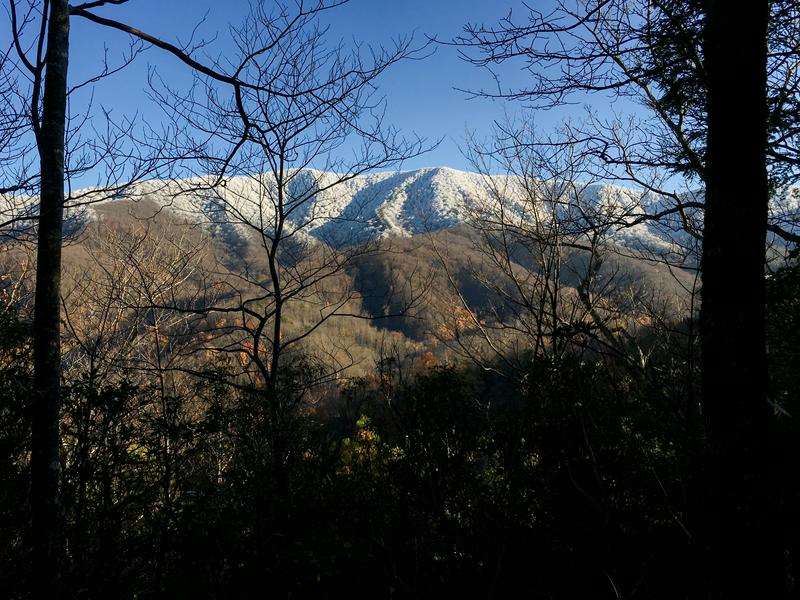The Creation of the Appalachian Trail
By | May 5, 2019

The Appalachian Trail or the AT is the most well-known hiking trail in the United States. Stretching for approximately 2,200 miles from Springer Mountain in Georgia to Mount Katahdin in Maine, its white blazes run through 14 states and is the oldest of the long-distance trails in America. It is estimated that about 2 to 3 million people have hiked on at least a portion of the AT in 2018.
The concept of this monumental hiking trail was largely the vision of one person.

Benton MacKaye was a forester originally from Connecticut who moved to Massachusetts at a young age. Most of all he wanted a swiftly urbanizing America to connect with nature.
However, he did not act on his vision until the death of his wife by suicide in 1921. Within a few months, the forty-one-year-old made a revolutionary proposal: to create a hiking trail that would follow the crestline of the Appalachian Mountains.
MacKaye’s ideas were the culmination of the ultimate expression of a hiking movement that took shape in the early 20th century. Benton expressed his concerns best when he wrote, “The ability to cope with nature directly - unshielded by the weakening wall of civilization - is one of the admitted needs of modern times.”

MacKaye proposed uniting existing trails into one unified system that would range from Georgia to Maine. This would mean setting aside lands as a park for a national purpose like had been done in the west with Yellowstone National Park. He proposed building shelter camps at regular intervals to help hikers on the route and thought it would help to create a sense of community and purpose. His ambitions were more than just creating a hiking trail, but to build the infrastructure that would allow people to step away from modernity. It would allow people to turn back from what “militarism” in an appeal to “the primal instincts of fighting heroism, of volunteer service and of work in a common cause.”

The idea caught fire. Much of this was done by MacKaye himself who proselytized and popularized the idea. Local hiking organizations began to organize and scouted potential paths. In 1922 MacKaye’s proposal started to be published in the popular media. The first section of the Appalachian Trail was developed between Bear Mountain to Harriman State Park in New York provide the crossing over the Hudson River. By 1925 the Appalachian Trail Conference (ATC) was formed. This would later become the Appalachian Trail Conservancy.
This meeting provided the impetus to build the trail. However, there were fits and starts. MacKaye was more of a visionary than a person who could practically build the AT. New leadership came in the form of Judge Arthur Perkins and admiralty lawyer Myron H. Avery who had the organizational skills necessary to build the AT. However, they and in particular Avery had a much narrower vision of the trail than MacKaye. He viewed it simply as a hiking trail, and not some revolutionary movement. Avery and MacKaye conflicted over the purpose of the trail and became enemies. Avery, in particular, was strong-willed and forceful. MacKaye ended up co-founding the Wilderness Society and disassociated himself from the ATC until Avery died in 1952.

Myron Avery is believed to be the first person who walked every mile of the trail, which was completed on August 14, 1937, by Civilian Conservation Corps workers. There was little fanfare.
Since 1937 the AT has gone through several changes. First, during World War II, portions of the trail were lost due to a lack of manpower to maintain the trail. These were restored by 1951. Also from its inception, local organizations and politicians fought to protect the areas around the trail from development. However, in 1968 the Federal government passed the National Trails System Act which designated the AT along with the Pacific Crest Trail as the first national scenic trails.

The route also has changed from the original route flagged by Myron Avery. The original trail was meant to just blaze a connecting route and often followed forest roads. The current route is much more engineered for hikers and leads up into mountains that before were bypassed.
In recent years the popularity of the AT has grown. According to the ATC from 1936 to 1969, only 59 people thru-hiked, or completed the trail from end to end (these are called 2,000 milers). In recent decades this number has grown exponentially so that between 2010 and 2018, 8,547 people have thru-hiked the AT.
While MacKaye’s idealistic dreams may not have been fully realized, the AT has provided a challenge and a connection to nature for millions per year.

